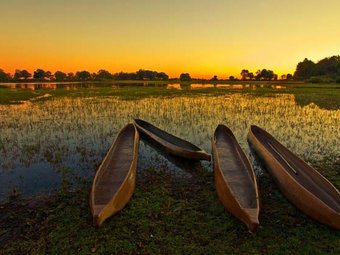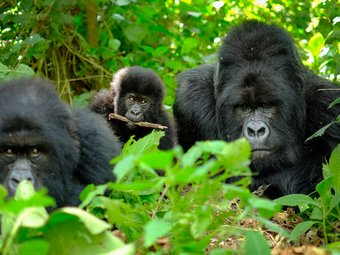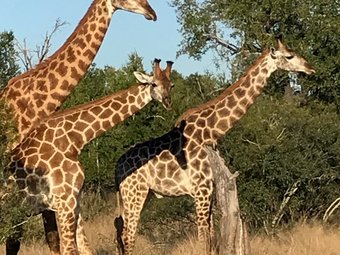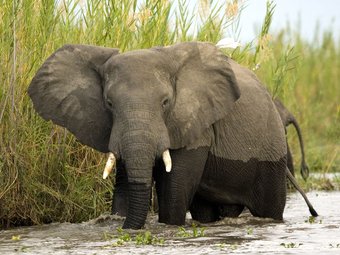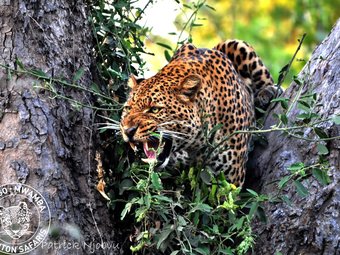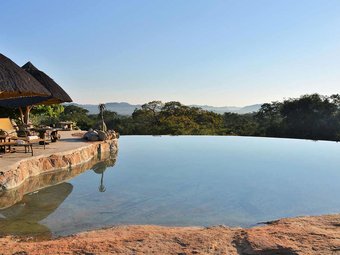Self-drive trip to Namibia
14 days—Explore Namibia at your own pace.
$4455-9596 USD
pp
Safari summary
Namibia is a vast country, even by African standards, covering an area approximately four times the size of the United Kingdom but with a population of a mere 2 million - one of the lowest densities in the world.
Our self drive Namibia trips are original and tailor made: climb sand dunes as high as sky scrapers at sunrise, watch seals frolic alongside your catamaran cruise, track desert adapted elephant, see shipwrecks off the remote Skeleton Coast, spot the rings around Saturn on a star-gazing experience, and learn about cheetah rehabilitation at Okonjima. Enjoy the freedom and flexibility that a self-drive itinerary affords.
We detail below a sample itinerary: note that we can change the location, duration, order and add in other destinations such as the Victoria Falls, Cape Town or Mauritius
About this tour
| Tour type | Custom, tailor-made, private | |
| Main focus | Game drives | |
| Activity level | Easy activity | |
| Best months | April, May, June, July, August, September, October, November | |
| Countries | ||
| Parks |
Fine details
Safari highlights
- Wildlife sanctuaries
- Self-drive safari
What’s included?
- Accommodation
- Airport transfers
- Meals
What’s not included?
- Alcoholic beverages
- All drinks
- International flights
- Laundry
- Park fees
- Tips and gratuities
Itinerary
Day 1
On arrival in Namibia, you will be transferred to your accommodation for a 1-night stay. Our ground team will meet with you this afternoon to go over your itinerary, hand you a mobile phone pre-programmed with your accommodation contact numbers, a cool box, maps and driving directions. Your hire vehicle will also be delivered at this time and they will assist with signing your contract. This evening have dinner in one of Windhoek’s restaurants – we provide recommendations with all bookings.
Day 2
Namib-Naukluft
This morning, you drive south into the Namib Desert, perhaps stopping to explore Sesreim Canyon, where centuries of erosion have incised a narrow gorge about 1km in length. The area provides great photography opportunities. The area has a range of accommodations that we use, we tend to prefer accommodations situated close to the National Park gates for convenience on the early morning excursion into the dunes.
Day 3
Namib-Naukluft
Spend a full day in the Sossusvlei area. The amazing sand dunes reach the height of a 70-story skyscraper and are constantly changing shape with the wind – you can climb up, and then have fun running down! The early morning light is a photographer’s dream. Take a hot air balloon trip, and spot desert adapted wildlife such as gemsbok, jackals, ostrich and oryx. The stars in the night sky in this area are incredible.
Day 4
You drive on this morning towards the coast and to Swakopmund: a fascinating and intriguing resort town complete with German half wooden architecture, palm lined avenues, coffee bars and great seafood restaurants. The town is full of activity options: seals can nibble at your oars on a kayaking trip, dolphins frolic alongside a catamaran cruise, feel the thrill of speeding down the dunes on a sandboard, quad bike through the sands, or take a scenic flight over the Skeleton Coast.
Day 5
Spend your day in Swakopmund. Activities abound, seals can nibble at your oars on a kayaking trip, dolphins frolic alongside a catamaran cruise, feel the thrill of speeding down the dunes on a sandboard, quad bike through the sands, or take a scenic flight over the Skeleton Coast.
Day 6
This morning, you head into Damaraland. This area is a desert wilderness and is sparsely populated by the Damara people who share their land with a range of wildlife including the Desert adapted Elephant, Rhinoceros, Giraffe, Springbok, Zebra, Oryx, and Ostrich. Its unique geological formations include petrified forests, ancient petroglyph-engraved sandstone slabs and volcanic mounds. Stay at a lodge with a number of activity options.
Day 7
Spend the day exploring Damaraland - close by, you have the World Heritage Site of Twyfelfontein, which is one of the most extensive rock-art galleries on the continent, most likely made by the San Bushmen hunters who left their marks on the surrounding rocks some 6000 years ago. Spend an afternoon tracking desert adapted elephant, nature walks, and sundowner drives.
Day 8
Etosha
Continue your journey northwards towards Etosha National Park and your next accommodation, where you will stay including dinner and breakfast. We have a selection of accommodations we can use in this area according to budget: one option is to stay on a private reserve home to a research centre, where guests can learn about how conservation practices are preserving rare and endangered species.
Day 9
Etosha
Widely regarded as one of the world's greatest wildlife viewing parks, the availability of water holes in Etosha means that the potential for viewing animals is better than some of Africa's other parks. The Park is dominated by the vast Etosha salt pan, and water holes are joined by a network of well-maintained gravel roads. The area is home to lion, rhino, leopard and elephant, cheetah, hyena, jackal, wild dog, giraffe, wildebeest, zebra, and all sorts of antelope.
Day 10
Etosha
Widely regarded as one of the world's greatest wildlife viewing parks, the availability of water holes in Etosha means that the potential for viewing animals is better than some of Africa's other parks. The Park is dominated by the vast Etosha salt pan, and water holes are joined by a network of well-maintained gravel roads. The area is home to lion, rhino, leopard and elephant, cheetah, hyena, jackal, wild dog, giraffe, wildebeest, zebra, and all sorts of antelope.
Day 11
Etosha
Make your way slowly across the Park. There is a range of accommodation we use according to budget level, location and reputation for providing good quality comfort and hospitality. Etosha National Park was made for self-drivers: pick up a map at the gate and head to a waterhole: in the dry season, there is a huge variety of wildlife hesitantly picking their time to drink – if you have binoculars, scan the surrounding bushes to spot waiting predators. This is safari at its most flexible.
Day 12
You drive south to the Africat Foundation. You can join in the afternoon activity, which normally starts at 16.00 and is usually tracking leopard in the immense reserve. After dinner you will also be offered the opportunity to visit a night hide where many nocturnal animals, including porcupine, honey badger and leopard are frequently sighted.
Day 13
The Africat Foundation is dedicated to the conservation, management and rehabilitation of leopard. Over a number of years, the Foundation has rescued more than 900 cats, of which 86.7% have been released back into the wild. Activities include learning about cheetah conservation, tracking hyena on foot, leopard viewing from a hide or from game viewing vehicles, watching game activity from the hide, and taking a self-guided walk along a nature trail. This is often a highlight of a trip.
Day 14
Drive back to Windhoek airport in time for your afternoon departure flight.
Here are the latest 6 tours by Native Escapes. See all 15 tours.
Luxury Fly in Safari & Falls
Tour by: Native Escapes
Countries:


Focus: Walking safari—with armed guard
Highlights of Rwanda
Tour by: Native Escapes
Countries:

Focus: Primate trekking
Cape Town and Kruger
Tour by: Native Escapes
Countries:

Focus: Walking safari—with armed guard
Malawi Safari Adventure
Tour by: Native Escapes
Countries:

Focus: Game drives
Tailor Made Zambian Safari
Tour by: Native Escapes
Countries:

Focus: Game drives
Zimbabwe Family Safari
Tour by: Native Escapes
Countries:

Focus: Walking safari—with armed guard
Cleanliness of vehicle
Meet and greet team
Quality of itinerary
Responsiveness of staff

